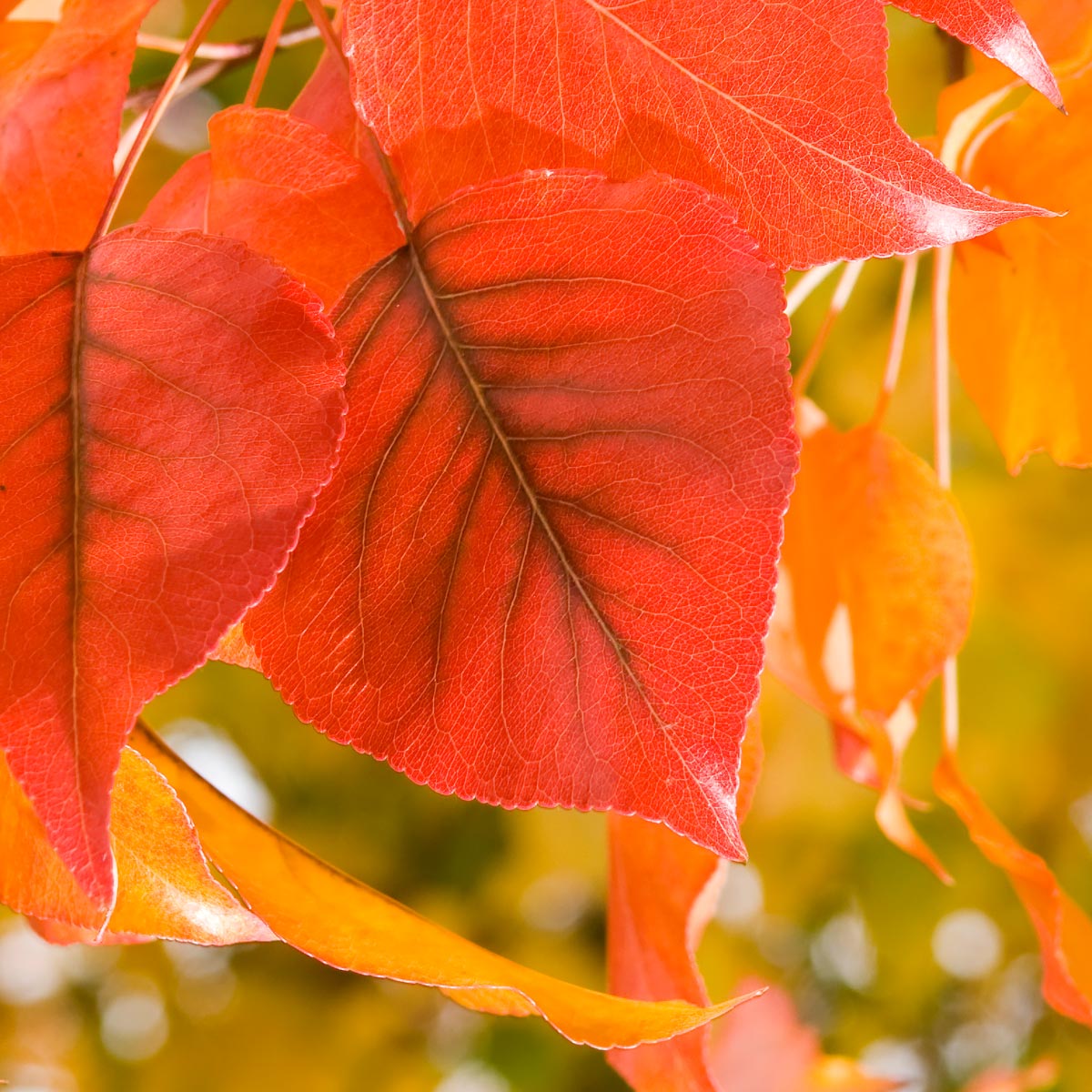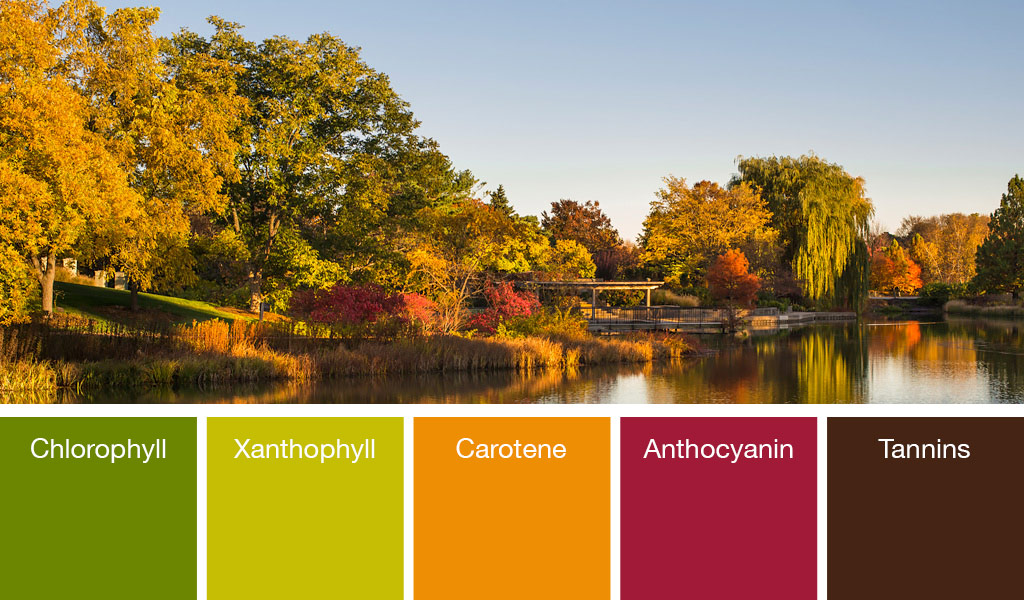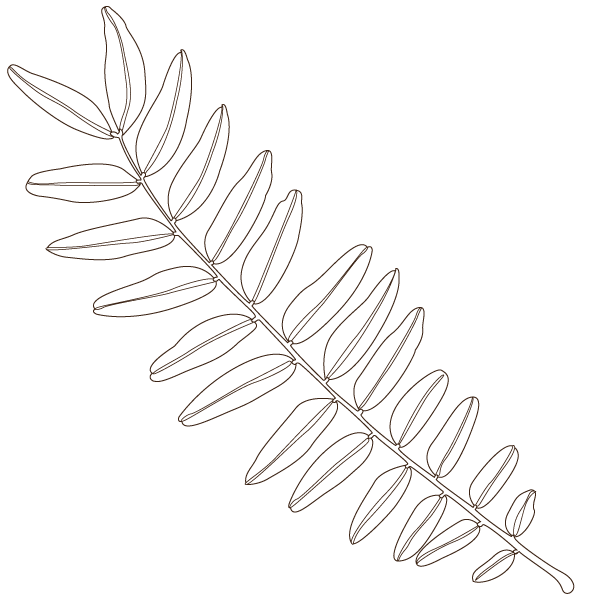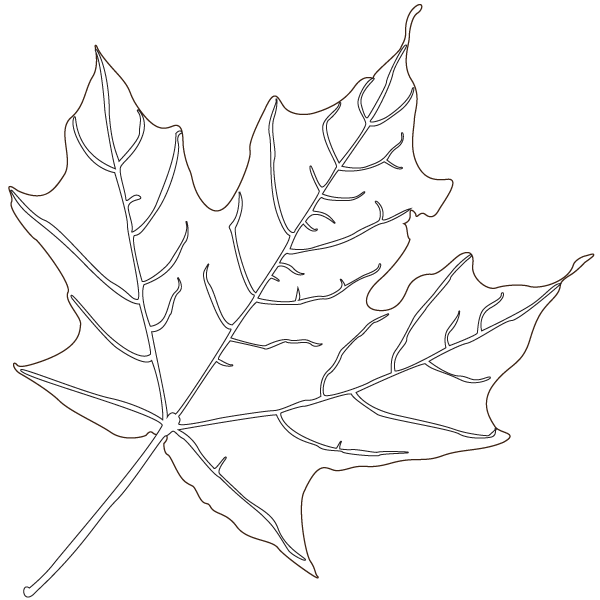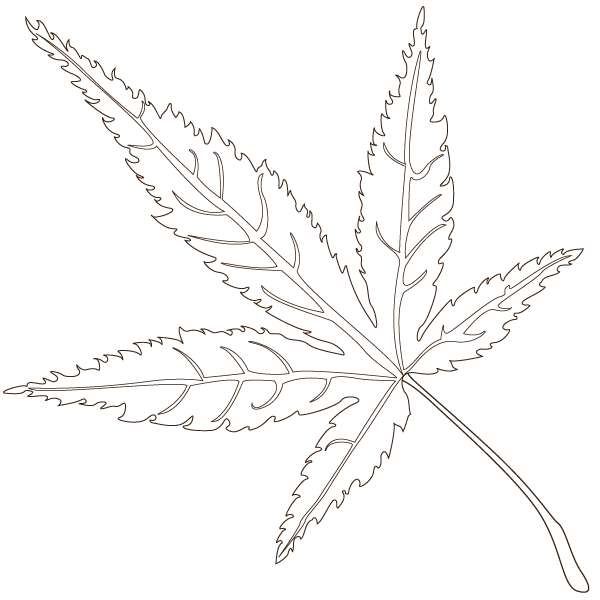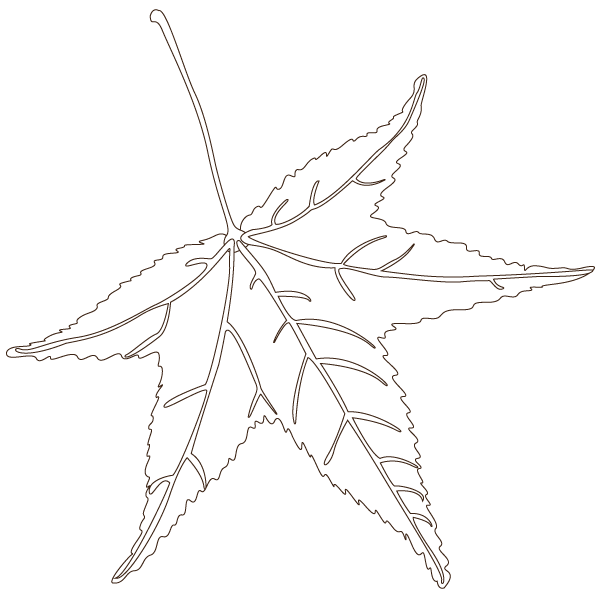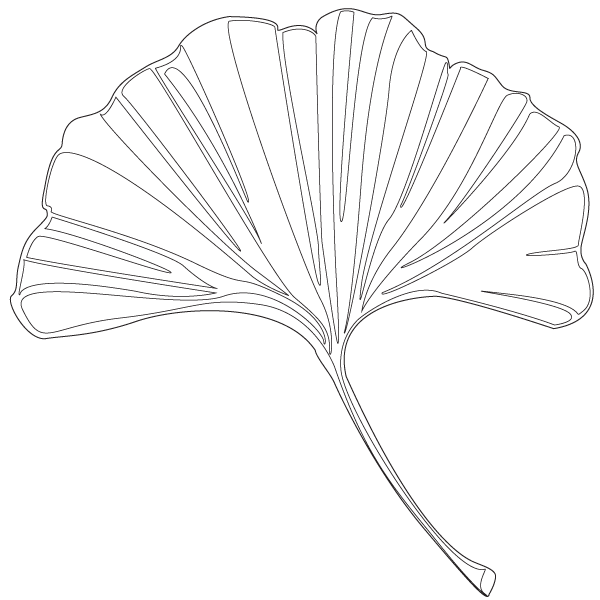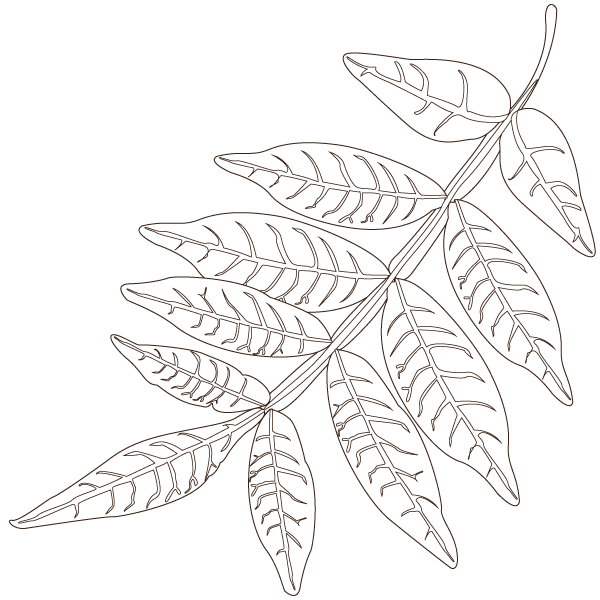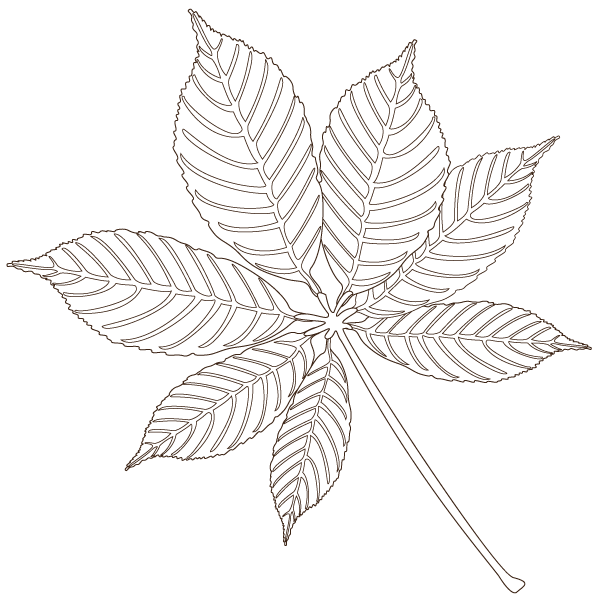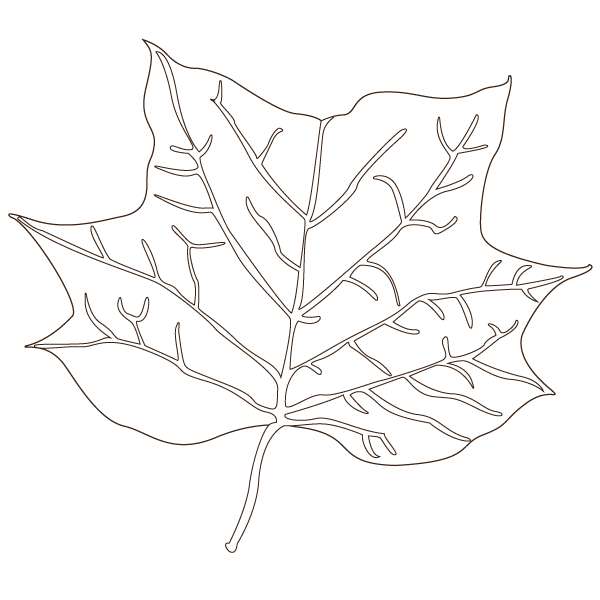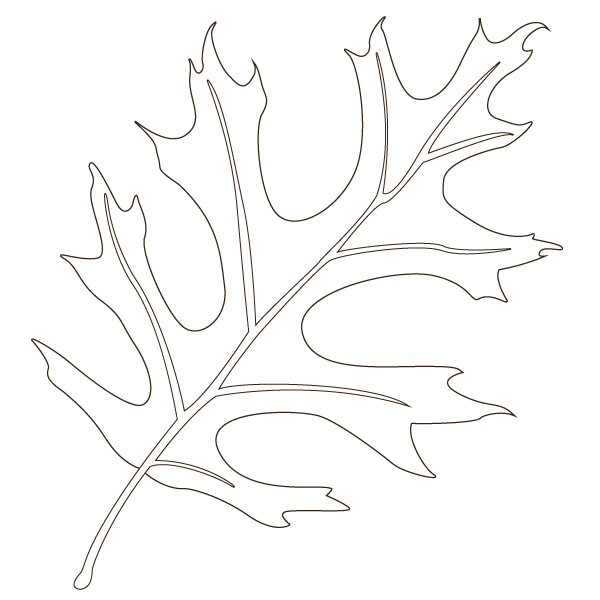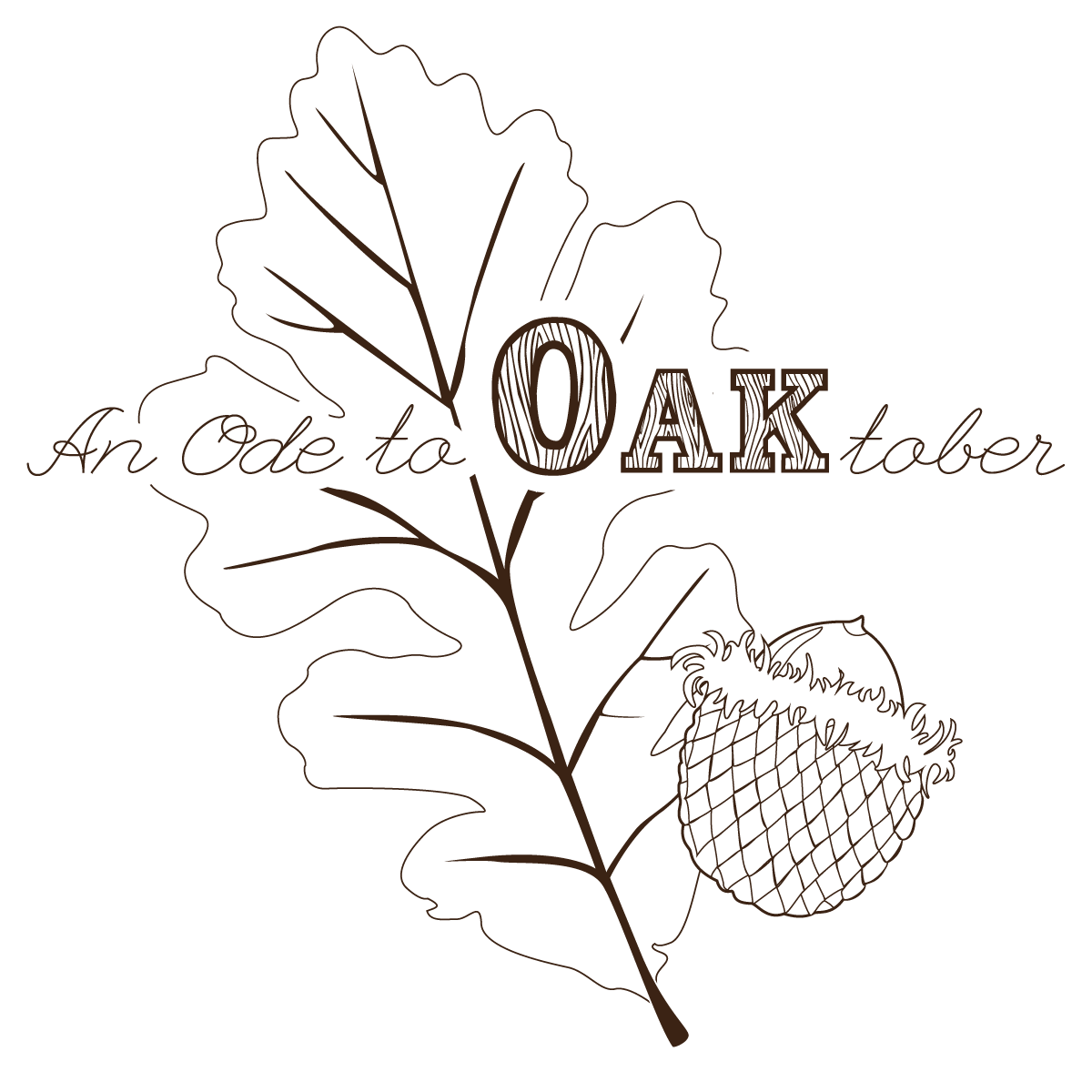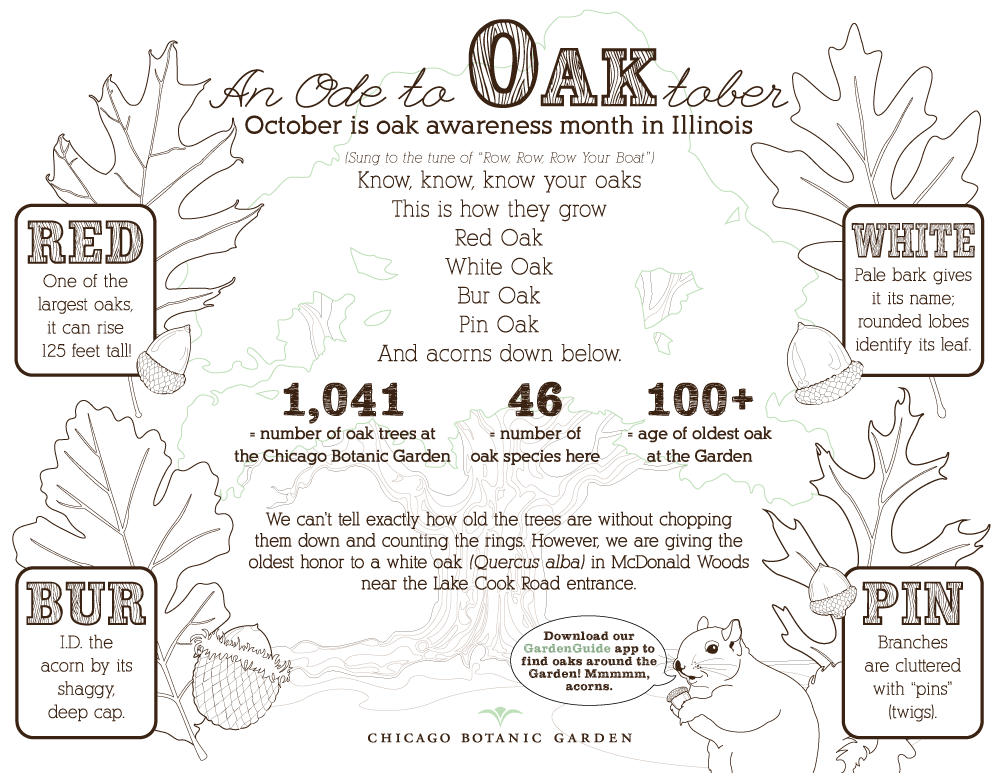Fall is a wonderful time to take a guided or self-field trip to the Chicago Botanic Garden. Children will love to learn about the many shades of fall leaves.
During the summer, tree leaves produce all the pigments we see in fall, but they make so much chlorophyll that the green masks the underlying reds, oranges, and yellows.
In fall, days get shorter and cooler, and trees stop producing chlorophyll. As a result, the green color fades, revealing the vibrant colors we love. Eventually, these colors also fade, and the leaves turn brown, wither, and drop. Then the trees become dormant for winter.
There are four pigments responsible for leaf colors:
- Chlorophyll (pronounced KLOR-a-fill) – green
- Xanthophyll (pronounced ZAN-tho-fill) – yellow
- Carotene (pronounced CARE-a-teen) – gold, orange
- Anthocyanin (pronounced an-tho-SIGH-a-nin) – red, violet, can also be bluish
Leaves are brown when there are no more photo-sensitive pigments; only the tannins are left.
Color these leaves according to the pigments they produce:
Leaves turn color early in the season; the lighter carotenes glow warmly against the blue sky and green grass.
The fading chlorophyll, combined with xanthophyll, carotene, and anthocyanin, produce the spectacular show we anticipate every year. Leaves change slowly and over time may be any combination of the four pigments, ending in a brilliant flame of anthocyanin.
Like the maple, this tree puts on an awe-inspiring display of xanthophyll, carotene, and anthocyanin all together.
Light filtering through the xanthophyll and lighter carotene of these leaves creates an ethereal glow. The ginkgo drops all of its leaves in a day or two.
Carotenes recede quickly around the edges of the leaves as they prepare to parachute to the ground.
A pale hint of chlorophyll mixes with xanthophyll and a touch of carotene as this tree shuts down for winter.
Facts about fall leaf colors:
- Trees use the sugars they produce through photosynthesis to make all of the pigments we see.
- The best fall color display comes in years when there has been a warm, wet spring; a summer without drought or excessive heat; and a fall with warm, sunny days and cool nights.
- Chlorophyll, carotene, xanthophyll, and anthocyanin are also responsible for the coloring of all fruits and vegetables, including corn, pumpkins, beans, peppers, tomatoes, and berries.
- Peak fall color comes earlier in northern latitudes than southern latitudes, so if you miss the best of the sugar maples in Chicago, take a trip south to get your color fix.
- You can preserve a leaf by ironing it between sheets of wax paper.
Fall color(ing) activity correct colors:
Illustrations by Maria Ciacco
©2016 Chicago Botanic Garden and my.chicagobotanic.org

